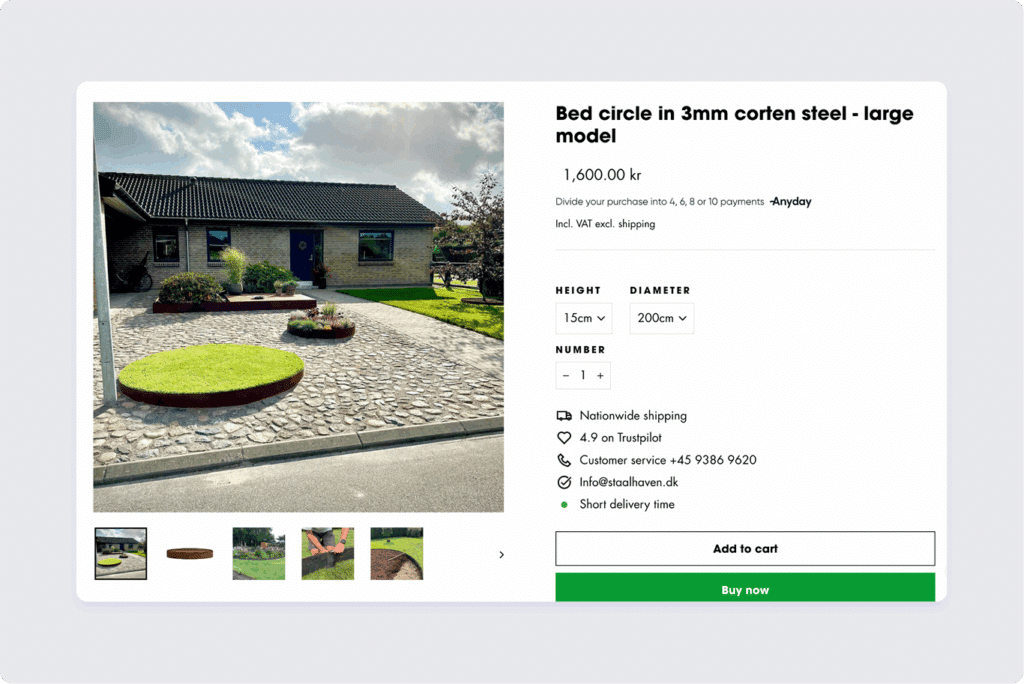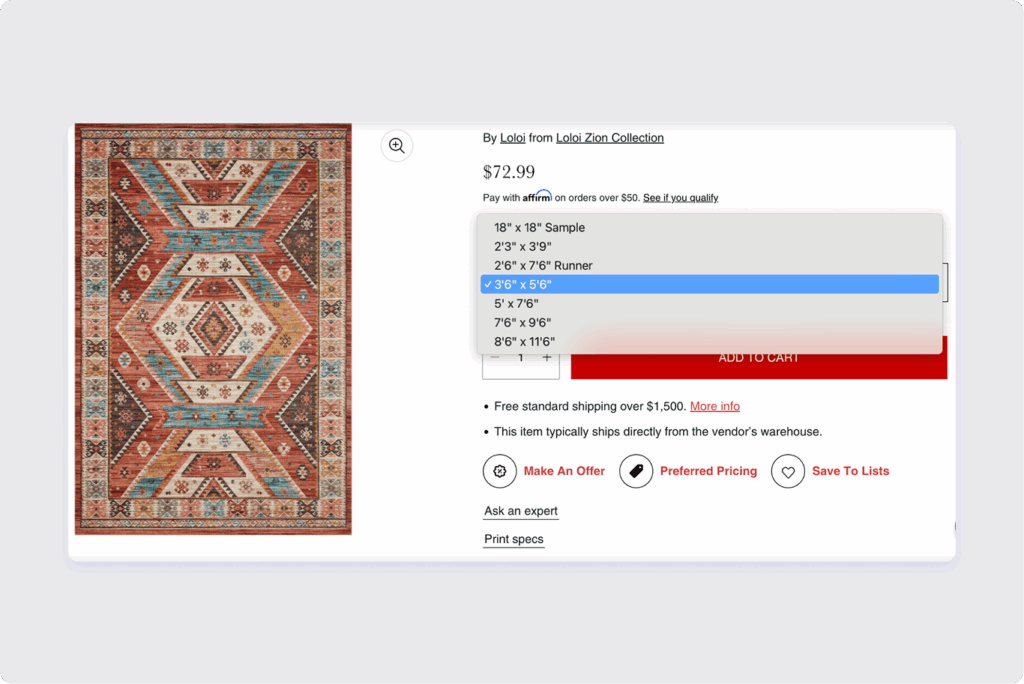Returns are a silent profit killer for Shopify stores. The pattern is clear: customers return products when their expectations don’t match reality, often because of unclear or inconsistent pricing. Each one chips away at your margins with extra shipping, restocking, and labor costs. And worse, they can leave customers frustrated and hesitant to buy again.
A large portion of returns are preventable. Many happen because of mismatched expectations, customers order the wrong size, miscalculate costs, or get confused by complex product configurations.
In this article, we’ll break down a practical framework for avoiding these preventable returns. By using a custom price calculator, you can ensure pricing clarity, minimize errors, and give your customers the confidence to buy the right product the first time.
Why Pricing Errors Lead to Returns
Pricing is one of the most important signals customers look for when deciding to buy. If the price isn’t clear, consistent, or trustworthy, the buying experience quickly unravels. For Shopify stores selling customizable or complex products, like made-to-order furniture, personalized apparel, or bulk B2B items, the risk is even higher. Customers want to understand exactly what they’re paying for and why. When pricing feels like a moving target, hesitation sets in.
This uncertainty can surface in two ways. First, during the browsing and checkout stages, unclear pricing can lead to abandoned carts. Shoppers may start configuring a product but back out the moment the math stops making sense. If your pricing tables require mental calculations, or if discounts and surcharges aren’t transparent, trust erodes.
Second, even when the customer completes the purchase, unclear or inconsistent pricing plants the seed for post-purchase regret. They might wonder if they overpaid or misunderstood the product they ordered. This buyer’s remorse is one of the most common drivers of returns.

Manual quoting further compounds the issue. Many stores still rely on spreadsheets or email exchanges to calculate prices for customized orders. Human error, like a misplaced decimal, missing surcharge, or forgotten shipping fee, can create discrepancies between the quoted price and the final invoice. When customers see a price they weren’t expecting, they often feel misled, even if the mistake was unintentional.
If customers aren’t 100% confident in the price and the product they’re buying, they’re more likely to return it. Clarity builds trust, and trust reduces returns. A transparent, accurate pricing process sets clear expectations upfront, eliminates confusion, and gives customers fewer reasons to change their minds after hitting “buy.”
A 3-part framework to prevent returns with a custom price calculator
Better logistics starts with eliminating the uncertainty that causes customers to second-guess their purchase. A custom price calculator provides a structured way to deliver that clarity. It helps customers understand exactly what they’re buying and why it costs what it does. Here’s a three-part framework for using one to keep returns to a minimum.
1. Set clear expectations upfront
Most returns happen when what customers get isn’t what they thought they were buying. A custom price calculator bridges that gap by letting customers build their product and see the price update in real time. Plus, it removes any chance of sticker shock at checkout.
Consider a custom furniture store. Shoppers can configure size, finish, and delivery add-ons, watching the total adjust instantly. There’s no mental math required, no waiting for a manual quote, and no guessing about hidden fees. This level of transparency sets the right expectations before money changes hands, which means fewer misunderstandings later.

From a business perspective, showing the full picture early builds trust. Customers feel in control of their choices and are less likely to experience “buyer’s remorse.” They’ve seen exactly how every option affects the price, making the product feel personalized and fairly priced. The clearer the path from configuration to checkout, the fewer surprises there are to trigger returns.
2. Eliminate manual misquotes and backend errors
Manual quoting is not only time-consuming but also error-prone. Spreadsheets, calculators, and back-and-forth emails create opportunities for mistakes, whether it’s a misplaced decimal, a forgotten surcharge, or a misapplied discount. A custom price calculator automates all of that by applying your pricing logic consistently, every single time.
For example, a print-on-demand merchant selling acrylic signage might have strict minimum order quantities or tiered pricing structures. Without automation, it’s easy for staff to overlook a surcharge or accidentally approve a lower price than intended. A price calculator ensures that all pricing rules are baked in. Customers only see real-time prices, and the store avoids costly misquotes.
The benefits go beyond accuracy. Automating pricing frees up your team to focus on fulfillment and customer experience rather than repetitive calculations. It also reduces the potential for friction with customers who might otherwise dispute charges or question why the invoice doesn’t match the quote. Fewer errors mean fewer unhappy customers and, ultimately, fewer returns.
3. Improve buyer confidence with transparency
Pricing transparency doesn’t just prevent mistakes; it builds confidence. When customers can see a clear breakdown: per unit, per size, or per customization, they’re far less likely to question the value of their purchase later. This psychological reassurance plays a big role in reducing returns.
Take a merchant selling made-to-measure products. By showing exactly how each customization affects the total (whether it’s additional fabric, premium finishes, or expedited shipping), the store removes any mystery around the final price. Customers feel empowered, not tricked, and are more satisfied with what they receive because the value aligns with their expectations.

This transparency also creates a sense of fairness. Buyers are more likely to trust a store that clearly explains how their total is calculated. That trust translates into higher satisfaction, stronger loyalty, and, crucially, fewer returns due to “price shock” or misaligned expectations.
Bringing it all together: reducing returns starts with pricing clarity
For Shopify merchants, the message is simple: better pricing clarity means fewer returns, higher customer satisfaction, and healthier margins. The right tools make this not just possible but easy. Instead of relying on manual quoting or static price tables, merchants can integrate a dynamic calculator that handles complexity effortlessly and ensures accuracy every time.
Solutions like Apippa’s Custom Price Calculator are built with this challenge in mind. They allow Shopify stores to implement rule‑based, real‑time pricing that matches each customer’s unique order, whether it’s custom furniture, print-on-demand products, or made-to-measure goods. By closing the gap between what customers expect and what they receive, merchants can reduce returns, build trust, and create a smoother buying experience.
If returns are eating into your profit margins, the first place to look isn’t your logistics, it’s your pricing process.
